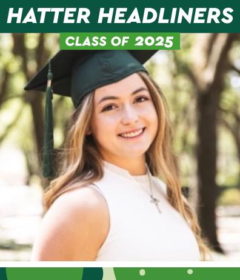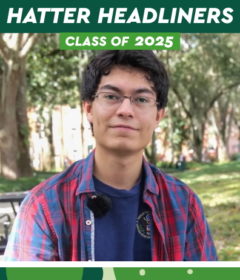New Dean: The Longest View of Plans at Stetson
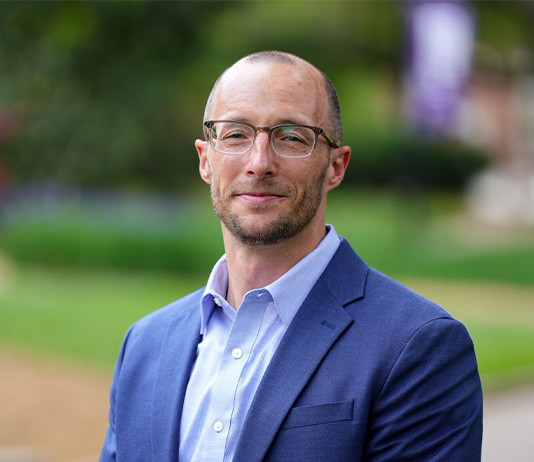
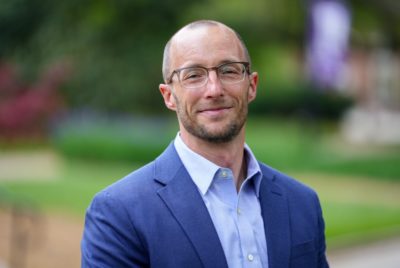
On April 18, when Stetson announced the selection of Kyle C. Longest, PhD, as the next Dean of the College of Arts and Sciences, Provost Elizabeth Skomp, PhD, was effusive in her praise.
In particular, Skomp pointed to Longest’s fit at Stetson. She noted that “his extensive experience in student-facing administrative and leadership roles, facilitating collaboration between units and divisions across campus, and his leadership of faculty processes and policymaking will serve him well.”
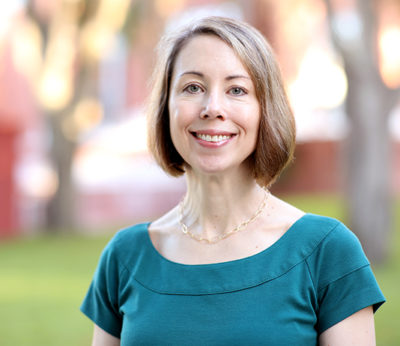
A day later, listening to Longest as he described his view of the new role at Stetson, which begins July 15, it appeared Skomp’s comments couldn’t be truer.
The Fit
Longest will arrive from Furman University in Greenville, South Carolina, where since 2020 he has served as Associate Academic Dean and Professor of Sociology. He began his career as a faculty member there in 2009, teaching courses on everything from the Sociology of Religion, Sociology of Deviance, Research Methods, Quantitative Analysis, Youth and Adolescence, and Discovering Greatness to the Sociology of Harry Potter. He was chair of the Sociology Department for four years (2016-2020). Among other roles, he was the Interim University Registrar for an academic year, as well as associate director and facilitator at the Associated Colleges of the South’s annual Teaching and Learning Workshop.
In addition to credentials and experience, Longest’s perspective might even be more indicative of initial impact at Stetson, especially given the university’s recent rollout of its new Forward Together Strategic Priorities and Plan.
The Timing
Longest was, in fact, attracted to Stetson because of that timing.
“When I started looking into Stetson’s mission, values and recently released strategic priorities, I kept coming away amazed at how close of a fit it was to my own perspective on where higher education should be headed,” said Longest, who received master’s and doctorate degrees in Sociology from the University of North Carolina at Chapel Hill. “There were times where I thought, it’s almost as if someone asked me how we should be approaching these real challenges.”
Most intriguing was Stetson’s emphasis on “relationships above all else.”
“Stetson is clearly very student-centric in a holistic way and focused on creating authentic value for students that will help them as they enter into the world after Stetson,” he explained. “This ties into engaged learning and new opportunities, and how I see Stetson embracing and championing the importance of diversity, equity and inclusion at all levels as a principle and foundational value for students, faculty and staff. These were all things that just continued to fit.
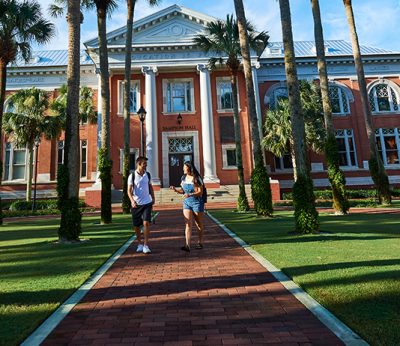
“I knew I only wanted to make the transition from Furman, because [Furman] is a place I love, if it was to a place that matched my vision — for the way I believe higher education is going to need to confront the real challenges that it’s facing.”
The Opportunity
Additionally, Longest saw his own professional challenge and opportunity. By virtue of his research, he has a deep understanding of how adolescents manage the transition to young adulthood, with particular focus on their religious and education trajectories. As a result, Stetson provided an ideal new setting.
“The second piece of ‘why Stetson?’ is acknowledging the socio-political landscape in Florida right now. And I can understand for some that could be concerning. But I have realized throughout my career that I am motivated by and thrive on challenge,” he said.
He draws similarities to first teaching sociology at Furman.
“Sociology very directly asks students to question many of their assumed beliefs and understandings about how the world works around things like gender, religion, race, class,” he continued. “And, while that was challenging at a school in the South with historical religious roots, it was extremely rewarding to see the light bulbs go off for some of my students when we questioned some of these issues from a sociological perspective.”
Stetson, Longest added, “has a mission and a set of values and priorities that I believe are fundamentally how we as an institution of higher education should be confronting a really challenging situation.”
As an aside, he noted that Stetson’s appearance in March Madness didn’t hurt the university’s allure, either. Longest is a passionate sports fan, having even taught the Sociology of Sport, and especially of college basketball, having grown up in Indiana, a hotbed for the sport. His time as a student at two basketball “blue bloods,” Indiana University and UNC-Chapel Hill, not only fueled his fandom but also furthered his critical appreciation of sport’s role in American society.
The Approach
Work style and job approach appear to be matches, too, particularly as Stetson’s College of Arts and Sciences pursues even greater experiential, contemporary, and integrative learning connected to the university’s Forward Together Strategic Priorities and Plan.
To describe his approach, Longest uses phrases such as “collaborative” and “structural” leadership.
I am adamantly opposed to siloing and to boundary work and turf definitions. I want to be integrative in building bridges and finding effective solutions.”
-Kyle C. Longest, PhD
“I have this dual approach to leadership. When I think about how we start initiatives, how we enhance what different units are trying to do and how we really bring those to fruition, I first try to build and harness energy through what I call ‘collaborative leadership,’” he said. “I want to make sure that as a group, we’re having dialogue so that I can learn, others can hear, that everyone’s voice is heard.
“I am adamantly opposed to siloing and to boundary work and turf definitions. I want to be integrative in building bridges and finding effective solutions, again, through that collaborative leadership style. But from there, once we have that [accomplished], I also take a structural leadership approach. By that I mean whatever that collaborative leadership produces, wherever we land, we have to support that through explicit, transparent and efficient policies and procedures. That’s the dual approach I always want to take.”
As for his first few weeks on campus this summer, there is the personal task of getting settled, of course. His family includes wife Paige, a radiologic technologist, and two sons, Harrison (13) and Hayes (11). That will take some time.
On the job, however, Longest intends to hit the ground running, with the belief there is not a moment to spare.
“I don’t think Stetson can afford any delay,” he concluded. “It has already created such momentum, and with its strategic priorities and some of the initiatives that I know the university is undertaking, I don’t want to pause any of that work.
“What I really want to do is learn through immersion–just get my ears and eyes in as many different places as possible,” he concluded, “so that as quickly as possible I can be a collaborative partner and start helping, supporting and contributing.”
-Michael Candelaria

